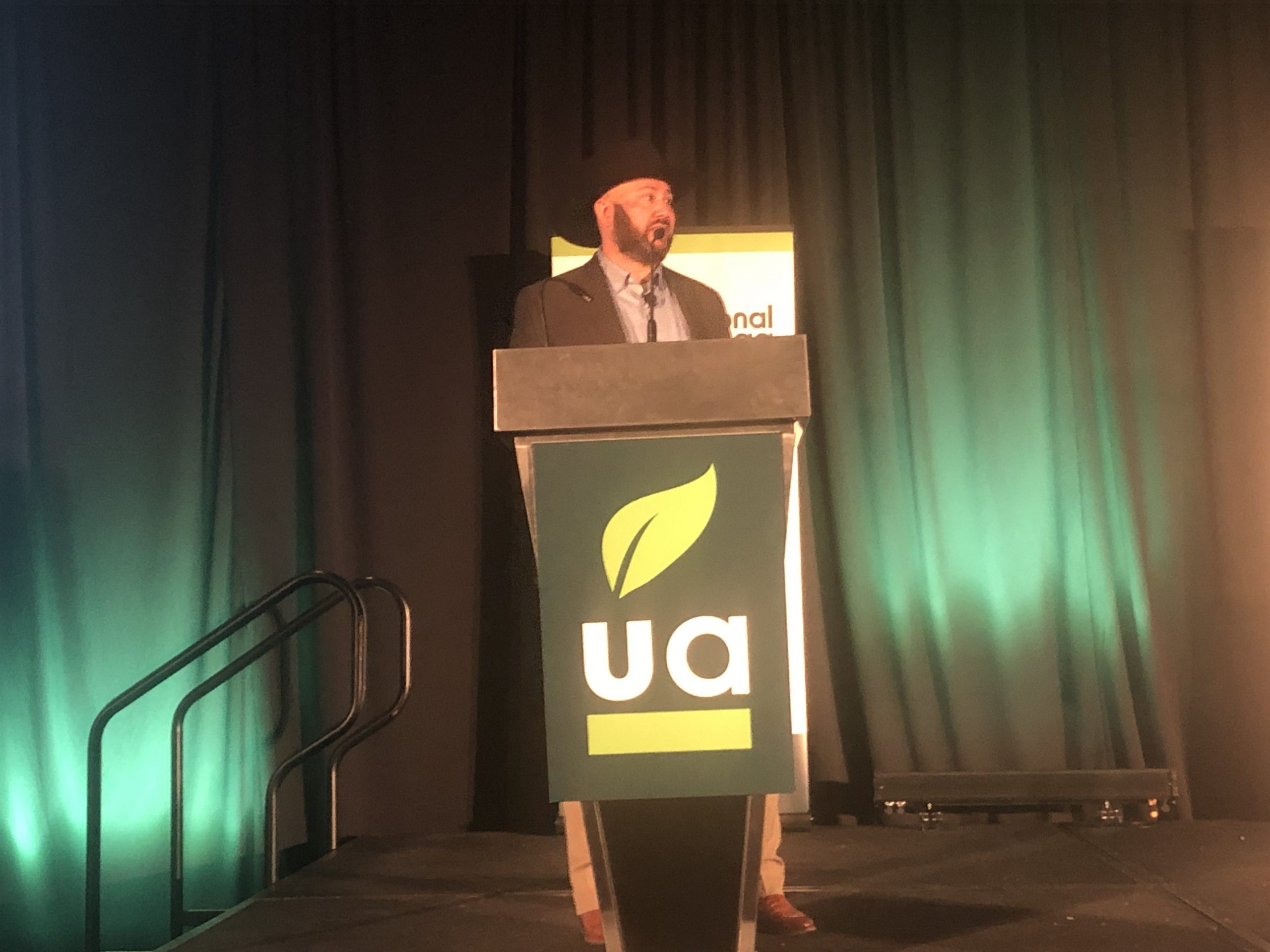
Mark Gutierrez speaks at the Unconventional Ag Conference
Regenerative farmers: “We all need to work together”
The importance of soil health and the need for farmers to work together and not criticize each other’s practices were key takeaways from educational sessions at the Unconventional Ag Conference held in Minneapolis in November.
Mark Gutierrez, executive director of the Minnesota Soil Health Coalition, gave a presentation titled “Does Soil Health Even Matter?” A panel featuring two farmers, Tom Cotter, who grows regenerative and organic grains in Minnesota, and Tap Parker, who grows conventional cotton in Louisiana and Arkansas, spoke about the importance of regenerative farming practices. All speakers emphasized the need for farmers—organic to GMO—to work together.
The sessions were two of a wide range of educational sessions at the Unconventional Ag Conference, which was attended by more than 200 farming and food industry stakeholders. Other sessions including an organic market update, overview of the plant-based food market, the hype around “precision fermentation” or synthetic biology to produce food, and headwinds facing the organic and non-GMO markets, among others.
“It takes time to regenerate the soil”
In his presentation, Gutierrez discussed the six principles of soil health. These include context or the unique geographic and climatic conditions that farmers face, minimizing soil disturbance through tillage, keeping the soil covered using cover crops, having living roots in the ground as much as possible, planting a diversity of crops to break pest and disease cycles, and integrating livestock.
“To achieve true regeneration, farmers need to implement all six,” Gutierrez said.
The benefits of those principles are drought resistance, erosion reduction, improved water quality, increased profits for farmers, and reduced synthetic inputs.
“Lots of less is more,” Gutierrez said. “Less synthetic fertilizer, less wind erosion, less equipment, less fuel, and less chemicals. And less bad press from urban friends.”
Gutierrez said there are health benefits from regenerative agriculture.
“Growing crops in this way produces food with greater nutrient density and increased phytonutrients,” he said.
Building soil health is not a fast, overnight process. “It takes time to regenerate the soil,” Gutierrez said. “But farmers are used to quick fixes with pesticides and GMOs.”
Soil health is a “win-win all around,” Gutierrez said. “It’s good for farmers and the environment and produces healthy food.”
An audience member asked Gutierrez about regenerative certifications that are starting to emerge. “I’m starting to see that,” he said. We will see interest from farmers in joining these programs to get validation for the work they’re doing.”
Gutierrez emphasized that farmers have an obligation to work together. “It can’t be about organic versus non-organic or GMO versus non-GMO. It’s about tools in your toolbox. Working together as partners, we can help farmers along.”
“Mother nature is screaming at us; we have to do something”
The message of working together continued in a panel discussion featuring organic and regenerative farmer Tom Cotter and conventional cotton producer Tap Parker.
“We aren’t organic, and there’s room for all of us,” Parker said. “We all need to support each other no matter what the farming practices. Not be so opposed to each other’s practices.”
“People point fingers and say you aren’t doing it right,” Cotter said. “We take the best of both sides and make it work.”
Cotter spoke about the need to minimize soil disturbance by reducing tillage and the use of agricultural chemicals.
“Like you have a roof on your house, we want the soil covered, and we want diversity in the soil like in our communities,” he said.
Soil health, Cotter said, has a positive ripple effect. “It helps the environment, the ag economy, and human health. I can’t state that enough.”
Cotter’s 800-acre farm is two-thirds regenerative and one-third organic but his goal is 100% organic production.
“Getting everything organic is the goal,” he said. “But I want to do it slowly and methodically.”
Cotter decides to transition a field to organic when he thinks the soil health is “A plus.” “Then I can transition to organic,” he said.
Cotter said a big mistake farmers can make is not realizing that everything is connected. “For every action there is a reaction. If you feed the soil, good things happen.”
Cotter emphasized the need for regenerative agriculture. “Mother nature is screaming at us, we have to do something,” he said.
Tap Parker grows cotton on his Louisiana and Arkansas farms using regenerative methods.
He doesn’t grow organically because he said it didn’t “fit my model.” He said growing organic is also difficult in cotton because it’s hard to segregate fields due to the heavy use of glyphosate and dicamba herbicides.
“There are barriers out there that made it hard to be organic,” he says.
Still, Parker says his farming methods are “doing a lot to help the environment.” He does as little tillage as possible and reduced the use of pesticides. “We plant cover crops after the tillage,” he said. “These practices are very important and we’re adopting them as quickly as we can.”
Parker grows GMO cotton and says he will continue to do so until “it’s shown to be harmful.”
Panel moderator Colin Steen, of Legacy Agripartners, said a key takeaway of the panel was that farmers like Cotter and Parker have differing practices growing GMOs or organics but that “there’s a lot of good that happens in between.”








